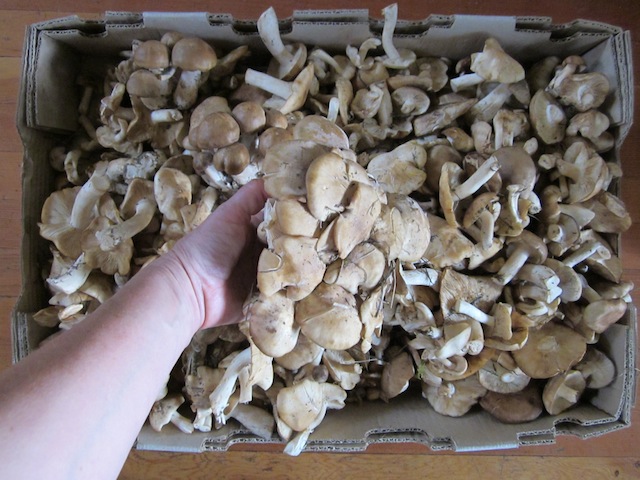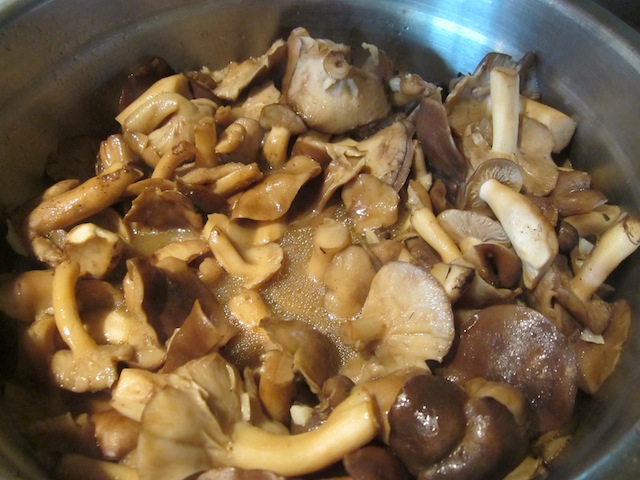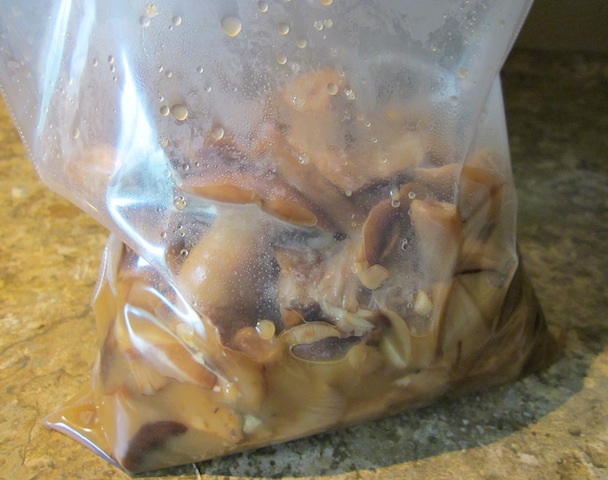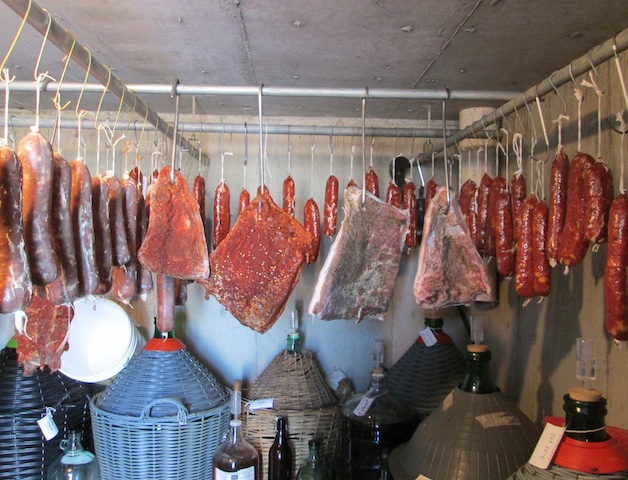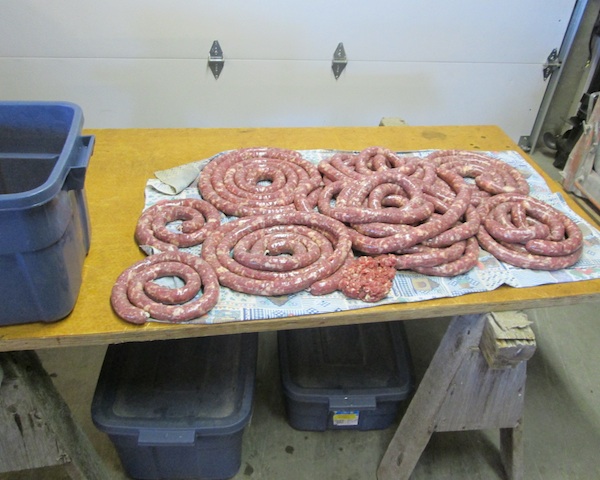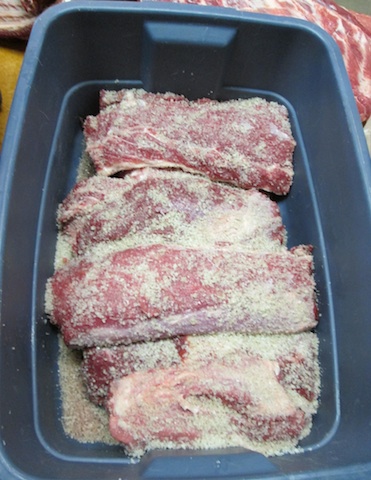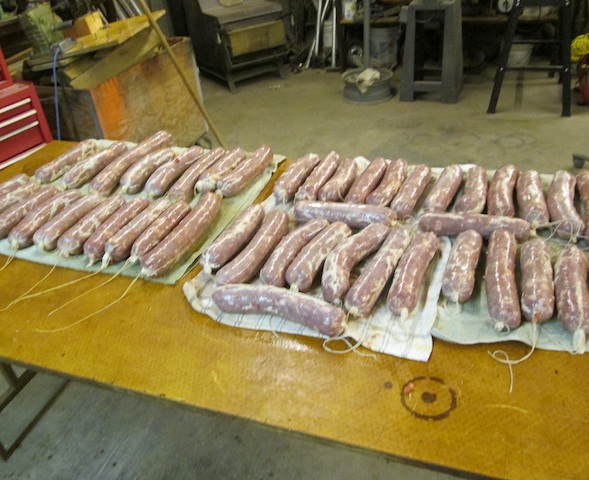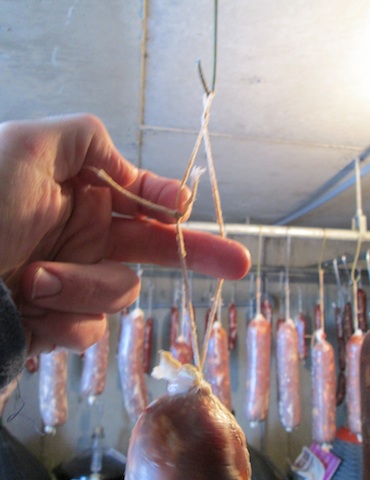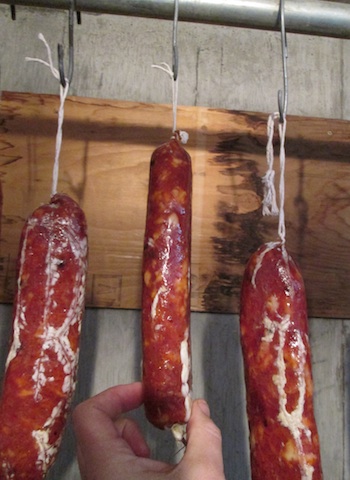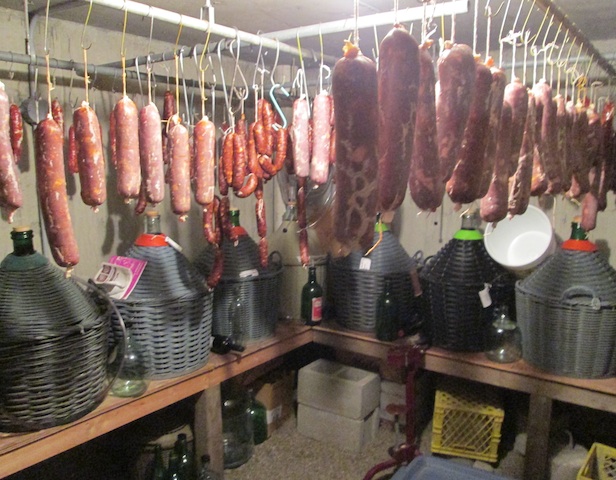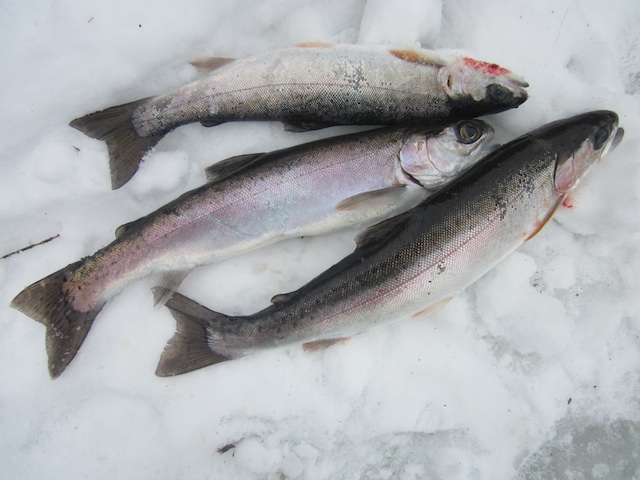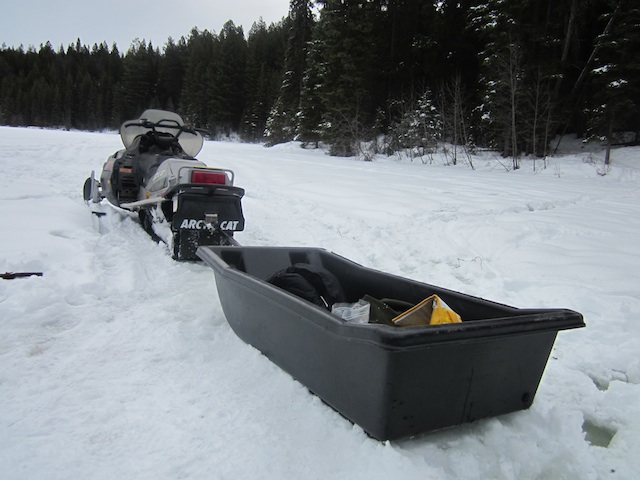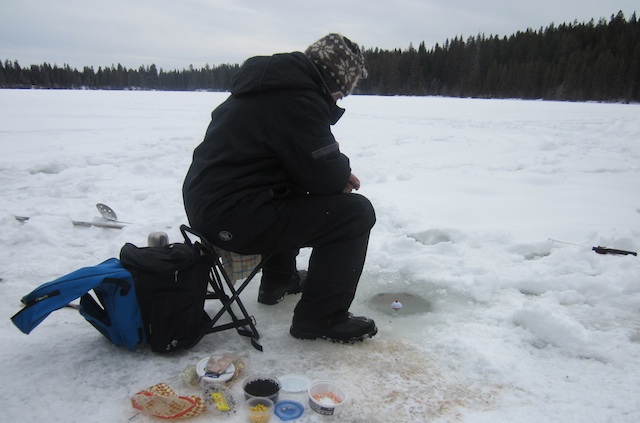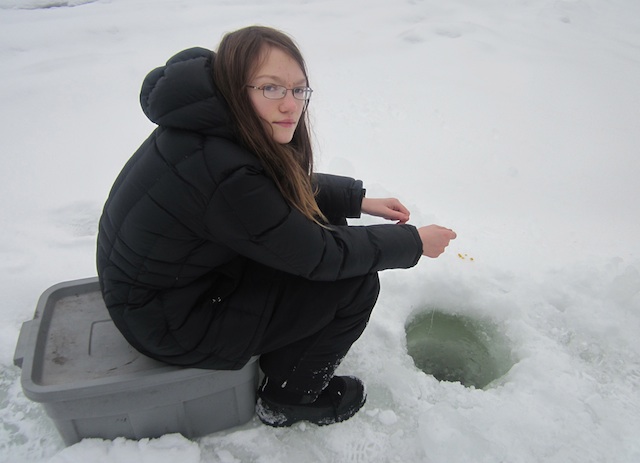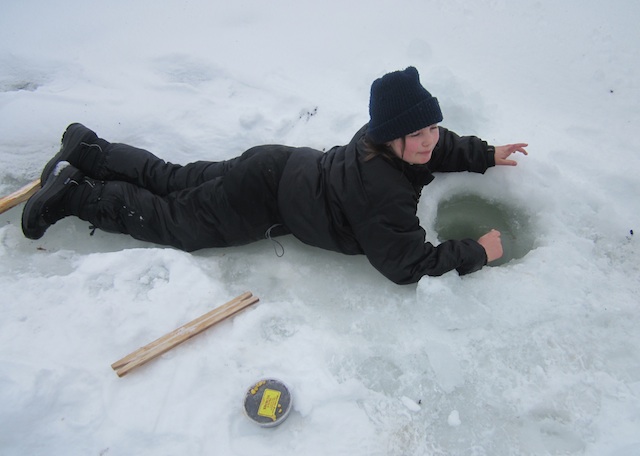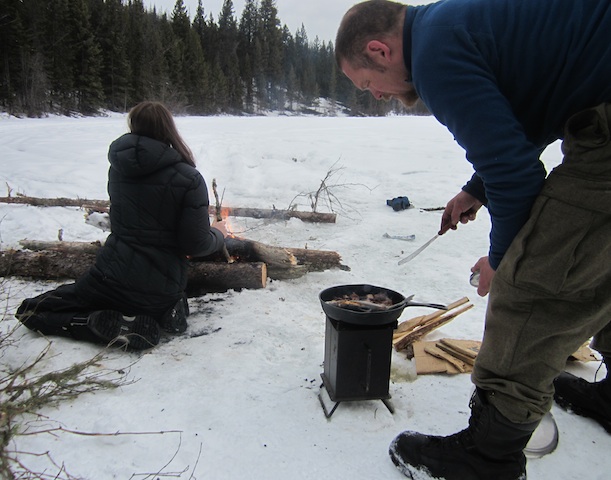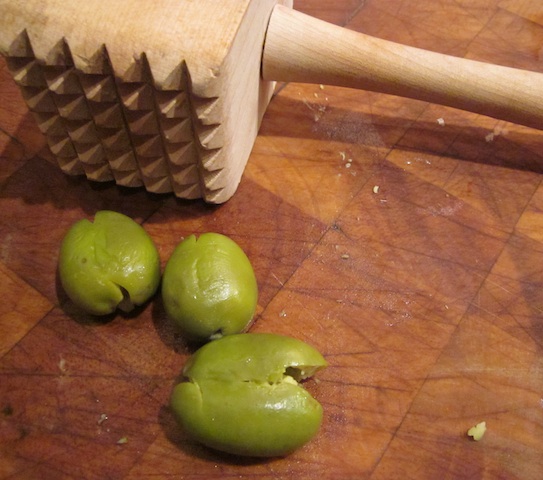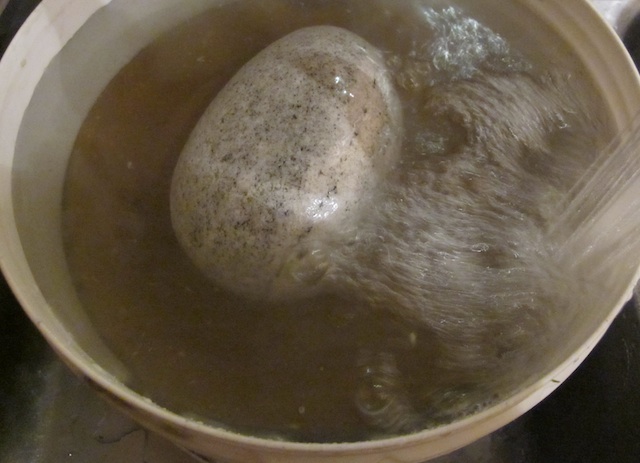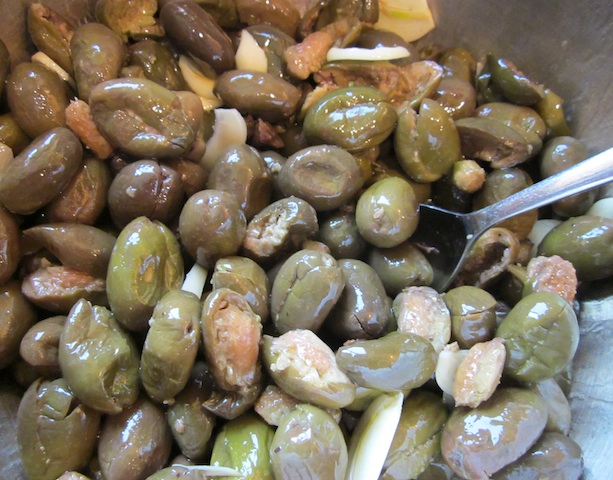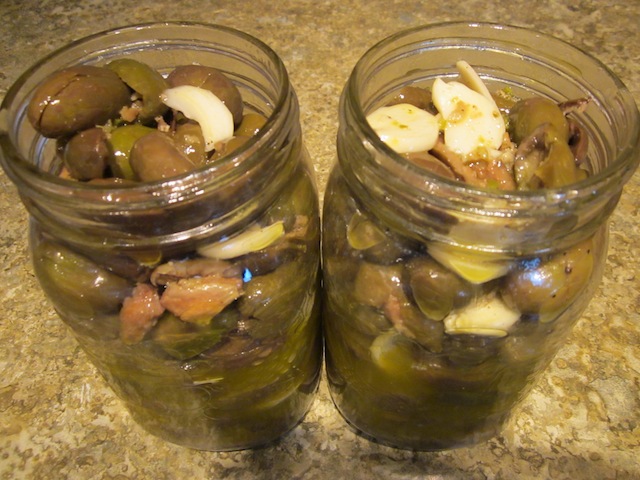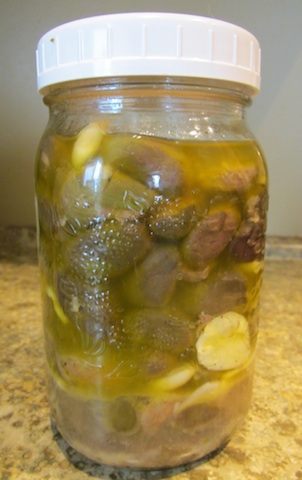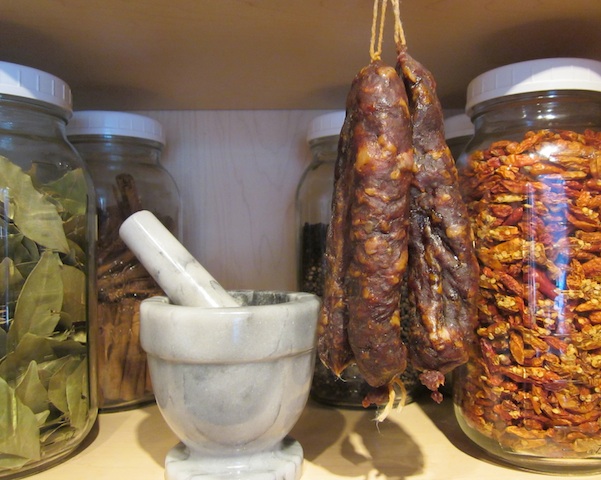
Charcuterie adds a wonderful element to winter pantry food. A small slice of cured meat goes a long way with its rich flavor. With traditional charcuterie there is a natural order to when the cured meats are ready and when the cured meats should be eaten.
“These dry-cured meats and sausages, almost always sliced thin, are dense and chewy, with a strong, dry-cured flavor and smooth, satiny fat. When we eat them, we’re most often eating pork that’s never gone above room temperature, let alone come close to the 150F recommended by government. And yet, properly prepared, these are perfectly safe to eat. There really is nothing similar to eating cured raw meat — it has a flavor and an effect like no other food.”
Charcuterie: The Craft and Salting, Smoking and Curing by Michael Ruhlman
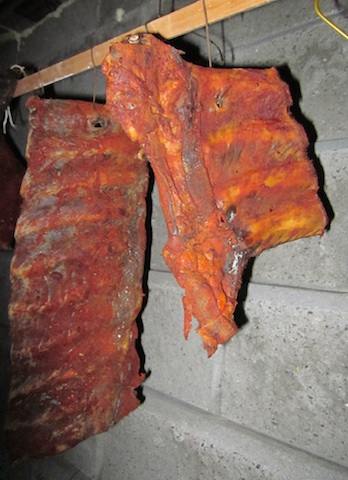
Raw cured ribs are the first cured product to come out of the cellar. Sliced thinly, the sweet meat of the ribs is a wonderful contrast to the salty cure. One rib will satisfy.
I just wanted to share a few pictures of the cured pork my husband Shaen made with the expert mentoring from Joe Trotta. Charcuterie is not an easy craft to learn from books. Charcuterie is a craft best passed down from the older generation to the younger generation.
If you are interested in learning the craft, I have no books for you, or courses you can take. You will just have to look around and find someone knowledgeable in the craft and someone willing to mentor you in the techniques. If you can find someone to show you how to cure raw meats, the process becomes simple, and the stress of wondering if you are doing it right, is greatly reduced.
Two warnings. Hurry up and learn. Many of the people that know these techniques are older. Many have children that do not value the wisdom that came from the old country and have never learned the craft. These old techniques are dying with the people, and unless we learn their knowledge, the knowledge will pass out of this world.
If you are a professional cook or chef, you will have to empty your cup of knowledge, if you want to learn traditional charcuterie. Everything you think you know about FOODSAFE is wrong regarding these foods. If you come to traditional cured foods with your own ideas of how to do it right, you will likely miss the mark, and mess up the process. Saying “Oh my God, that isn’t safe,” is meaningless and disrespectful to someone who has eaten these foods their whole life.
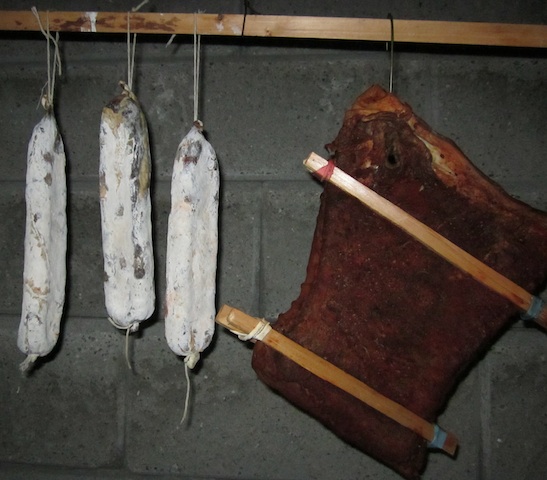
This is raw cured bacon with sea salt and paprika. The sticks help keep the bacon flat and stop it from curling. This is the second cured product out of the cellar. Very few people have enjoyed the flavor of raw bacon. It can be cooked but you will miss the satiny smoothness of the fat.
“Dry-curing results in a beautiful type of sausage, the most individualistic, idiosyncratic, and temperamental sausage there is, precisely because of its reliance on atmospheric conditions, which change all year round, and the presence of varying microflora in the air.”
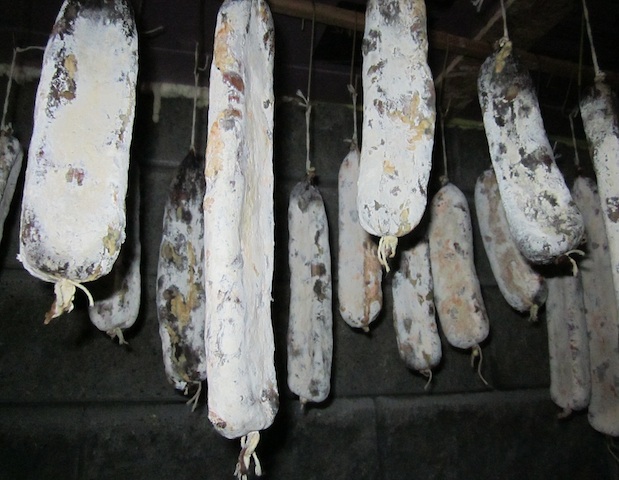
Soppressata is the third cured product out of the cellar. Soppressata is made from raw pork, sea salt and paprika which is stuffed into the pig’s intestine. There is no curing salts or other ingredients. Soppressata’s flat appearance is from pressing to help remove air from the salami.
But when your sausage has dried just right, and you slice it thin, and the interior is a glistening deep crimson red with bright pearly chunks of fat, it is incredibly exciting. This is real mastery over the food we prepare. To make a home-cured pork sausage, with just salt and pepper for seasoning, is a deeply gratifying experience, like making a great wine.”
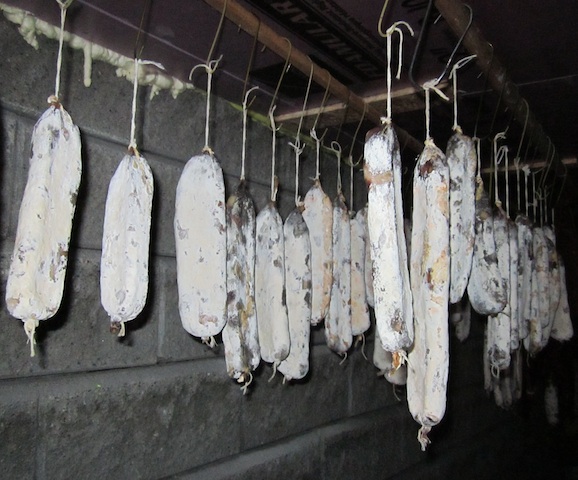
Soppressata is hung by its string on clothes hangers cut into hooks. Soppressata with its white coat is an eerie sight in the cellar. The white coating is safe to eat though traditional Italian sausage makers like Joe wipe the soppressata with vinegar and water to remove the coating.
Mastering the technique of transforming raw meat and fat, whether a sausage or a whole muscle, into something delicious without using heat, enhances your ability to work with all food. This is true craftsmanship, craftsmanship aiming for art, a craft reliant on the cook’s skill and knowledge and, perhaps, a little bit of divine intervention.”
Divine intervention indeed. Or maybe just allowing for the peaceful co-existence of humans with their helpful bacterial friends. When you cure long-term, your household will become colonized with helpful microbiota. If you would like to learn more about traditional Italian curing please see: Pantry Foods: Fast Cured Green Olives.

